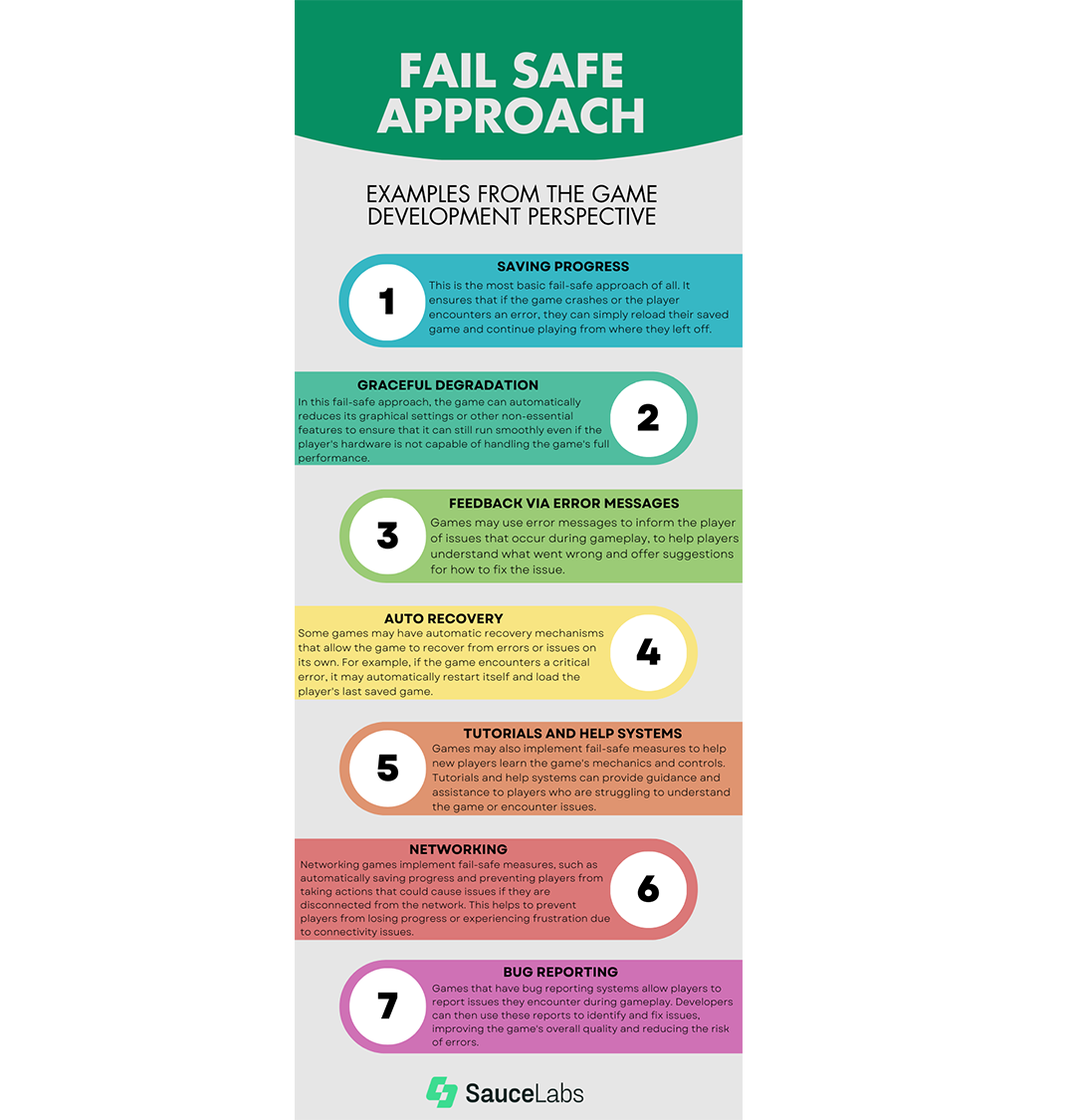Backtrace Blog
For the latest developments from our engineering team, head over to the Engineering Blog at engineering.backtrace.io.
Building Resilience in Game Development: The Power of Fail-Safe Approach
The process of game development is a multifaceted undertaking, encompassing various stages, including design, programming, testing, and debugging. Among the most vital considerations in game development is selecting the appropriate error handling approach. Two prevalent approaches in this regard are "fail-safe" and "fail-fast." In the first blog of our two-part series, we will explore the concepts of these approaches, demonstrate how they are applied in game development, assess their respective advantages and disadvantages, and examine the potential benefits of utilizing testing and debugging tools to improve the game development process.
What is a Fail-Safe Approach?
The fail-safe approach is a cautious approach to error handling. It involves implementing systems that prevent errors from causing significant issues or crashing the game. The primary goal of this approach is to ensure that the game continues to operate smoothly, even if something goes wrong.
For example, if an error occurs during gameplay, a fail-safe system might prompt the player with a message, such as "An error has occurred. Please try again later," rather than shutting down the game completely. Fail-safe systems may also attempt to recover from the error and continue running the game without interruption.

Why Fail-Safe Approach?
The fail-safe approach in game development can help developers create games that are more reliable, enjoyable, and profitable over the long term. By carefully considering which fail-safe measures are best suited to their game, developers can create high-quality games that are well-received by players and the gaming community.
- Improved Player Experience: Fail-safe measures can help ensure that players have a smooth and enjoyable gaming experience, even if errors or issues occur during gameplay. By providing automatic recovery, tutorials, and help systems, players can quickly recover from issues and continue playing the game.
- Increased Reliability: Fail-safe measures can also increase the reliability of the game by reducing the risk of errors or issues. By implementing automatic recovery mechanisms, saving progress frequently, and using error messages, developers can ensure that players can continue playing the game even if errors occur.
- Reduced Frustration: Fail-safe measures can also reduce player frustration by providing guidance and assistance when issues occur. This can help players feel more confident in their ability to play the game, reducing the likelihood that they will give up or stop playing due to frustration.
- Better Reputation: Games that are more reliable and enjoyable for players are likely to have a better reputation in the gaming community. This can lead to increased sales, more positive reviews, and a larger player base over time.
- Lower Risk: By implementing fail-safe measures, developers can reduce the risk of catastrophic failures that could lead to significant financial losses. For example, a game that crashes frequently or is known for causing issues on certain hardware configurations may be less popular among players, reducing its revenue potential.
Disadvantages of Fail-Safe Approach
Developers who choose to implement the fail-safe approach in game development must carefully consider the potential drawbacks. Although this approach can lead to improved player experience, reliability, and reputation, it may come at a cost. Here are the potential drawbacks to this approach:
- Increased Development Time: Implementing fail-safe measures can add additional development time and complexity to the development process. This can result in longer development cycles and increased costs.
- Increased Development Complexity: Fail-safe measures can also increase the complexity of game development, requiring developers to implement additional systems and functionality to ensure reliability and recovery in the event of an error.
- Increased Testing and Debugging: Fail-safe measures require extensive testing and debugging to ensure that they work as intended. This can add additional time and costs to the development process.
- Performance Impact: Some fail-safe measures, such as automatic recovery mechanisms, can impact game performance. This can result in lower
frame rates or other performance issues that may impact the player experience.
How Sauce Labs and Backtrace Can Help Game developers?
- Backtrace can help to reduce development time by quickly identifying and reporting errors, allowing developers to address issues more efficiently. Meanwhile, Sauce Labs products like Real Device Cloud and TestFairy can help to speed up testing and reduce the time needed to ensure that games are working correctly across a wide range of devices and configurations.
- While implementing Backtrace and Sauce Labs products can add complexity to the development process, these tools are designed to be easy to integrate into existing workflows. Both products offer comprehensive documentation, tutorials, and support to help developers get started quickly and easily.
- Backtrace and Sauce Labs products can help to automate and streamline the testing and debugging process, reducing the time and effort needed to identify and address issues.
- Developers can use tools provided by Sauce Labs to identify and optimize performance issues, leading to better overall performance and player experience.
Empowering Game Developers with The Right Sauce
By leveraging the tools and services offered by Backtrace and Sauce Labs, developers can address the potential drawbacks and ensure that their fail-safe approach is implemented effectively. These tools can help developers streamline the development process, optimize game performance, and quickly identify and address any issues that may arise.
Switch to Backtrace for your next project
If you have not used Backtrace yet or if you are using another tool, the powerful Jira and Backtrace integration is one more reason you should be using Backtrace in your next project. You may get started with a free trial of the Backtrace by signing up here.
